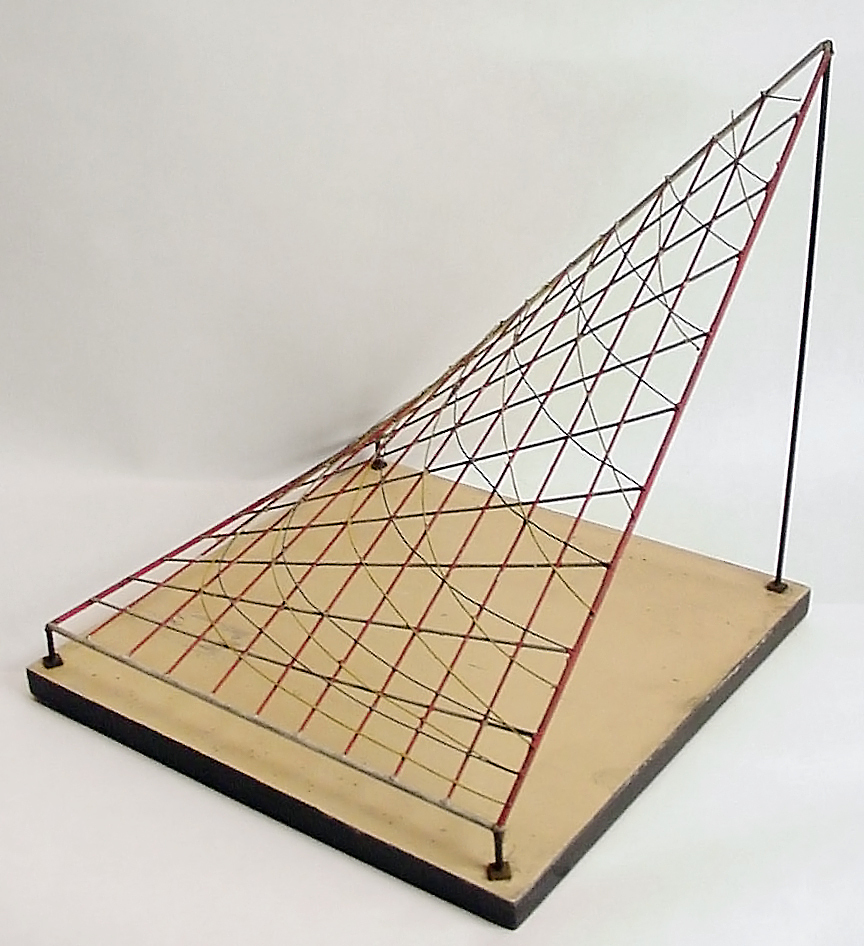- About MAA
- Membership
- MAA Publications
- Periodicals
- Blogs
- MAA Book Series
- MAA Press (an imprint of the AMS)
- MAA Notes
- MAA Reviews
- Mathematical Communication
- Information for Libraries
- Author Resources
- Advertise with MAA
- Meetings
- Competitions
- Programs
- Communities
- MAA Sections
- SIGMAA
- MAA Connect
- Students
- MAA Awards
- Awards Booklets
- Writing Awards
- Teaching Awards
- Service Awards
- Research Awards
- Lecture Awards
- Putnam Competition Individual and Team Winners
- D. E. Shaw Group AMC 8 Awards & Certificates
- Maryam Mirzakhani AMC 10 A Awards & Certificates
- Two Sigma AMC 10 B Awards & Certificates
- Jane Street AMC 12 A Awards & Certificates
- Akamai AMC 12 B Awards & Certificates
- High School Teachers
- News
You are here
Mathematical Treasure: Richard P. Baker’s Model of a Thermodynamic Surface

Model of thermodynamic surface, representing the behavior of a perfect gas, ca 1906–1935, Smithsonian Institution negative number NMAH2003-12889
Around 1900, mathematicians across the world acquired physical models, both to illustrate concepts they taught and to demonstrate familiarity with new ideas. They frequently purchased models from Europe, especially Germany. A few Americans also designed and made models. One of them was English-born Richard P. Baker (1866–1937), who began making models while he was a graduate student at the University of Chicago, publishing his first list of 100 models in 1905. These objects largely followed contemporary textbooks. By 1931. Baker was a professor of mathematics at the University of Iowa, and he had designed over 500 models, many on more abstract topics. Baker’s designs also included surfaces associated with areas of physics such as thermodynamics. This model shows the temperature, pressure, and volume of a perfect gas, as represented on surfaces like those envisioned by the distinguished American mathematical physicist J. Willard Gibbs. For a description of the Baker models that survive at the National Museum of American History, see https://www.si.edu/spotlight/geometric-models-baker.
Peggy Aldrich Kidwell (National Museum of American History, Smithsonian Institution), "Mathematical Treasure: Richard P. Baker’s Model of a Thermodynamic Surface," Convergence (September 2021)




